And why they’re often called ‘Gray Ghosts’.
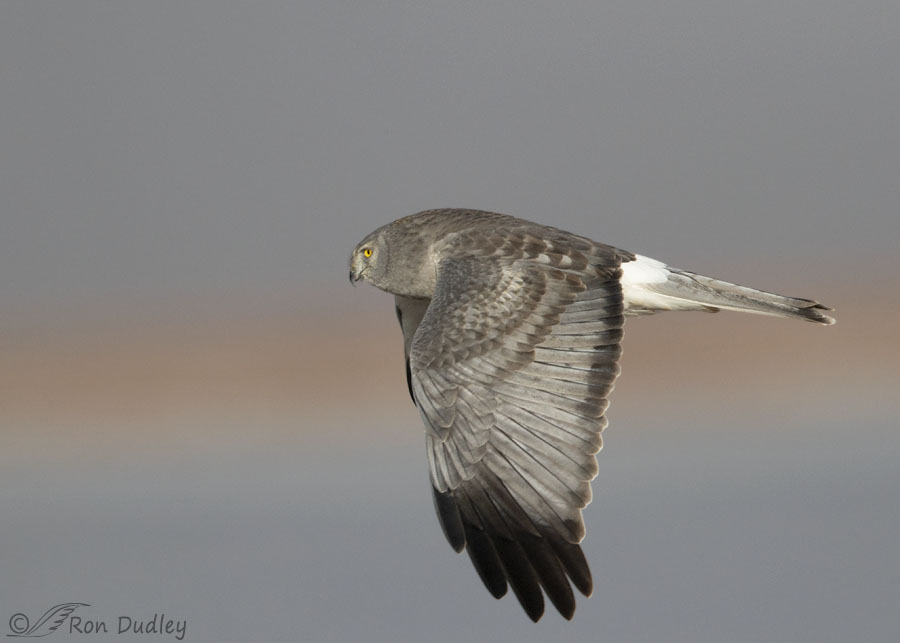
1/6400, f/6.3, ISO 500, Canon 7D Mark II, Canon EF 500mm f/4L IS II USM + EF 1.4 III Extender, not baited, set up or called in
Three days ago I managed to keep this adult male Northern Harrier in my crosshairs for long enough to get about a half dozen shots before he veered off. But as is often the case, at least with me, not all of them were sharp. Here I’m presenting three consecutive shots in the burst, the three photos I liked best.
The horizontal band of color behind the bird is phragmites in the distant background with standing water below. I like this wing position but he was looking slightly away from me.
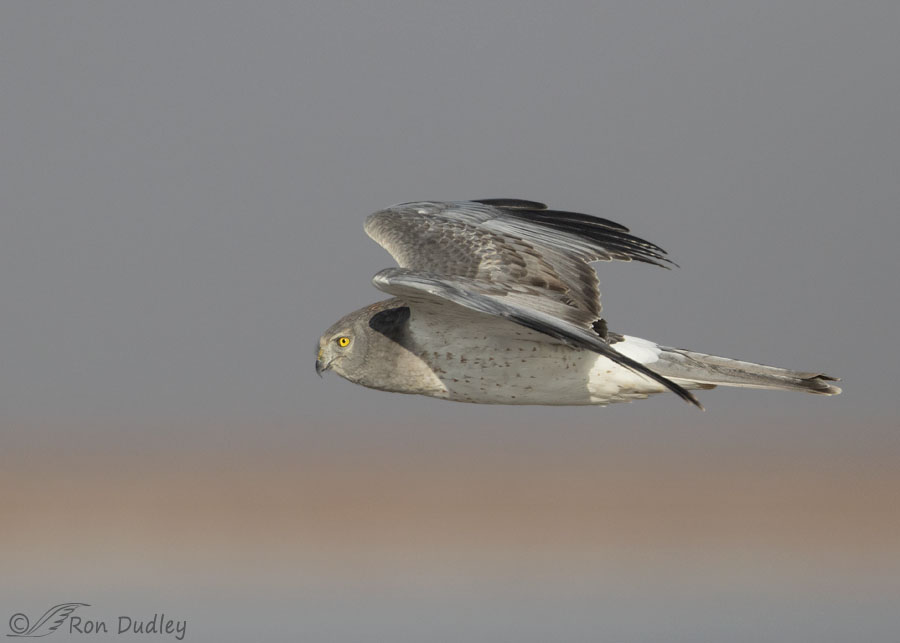
1/6400, f/6.3, ISO 500, Canon 7D Mark II, Canon EF 500mm f/4L IS II USM + EF 1.4 III Extender, not baited, set up or called in
One tenth of a second later he’d gained a couple of inches in elevation and was beginning to look more my way.
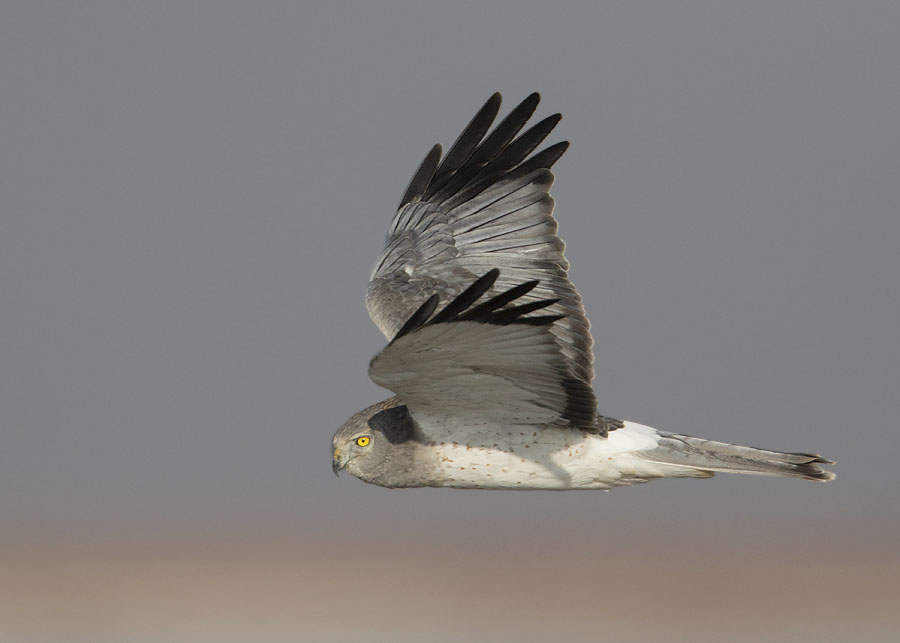
1/5000, f/6.3, ISO 500, Canon 7D Mark II, Canon EF 500mm f/4L IS II USM + EF 1.4 III Extender, not baited, set up or called in
In the next shot I got my best eye contact but the harrier isn’t quite as sharp as he is in the previous two images.
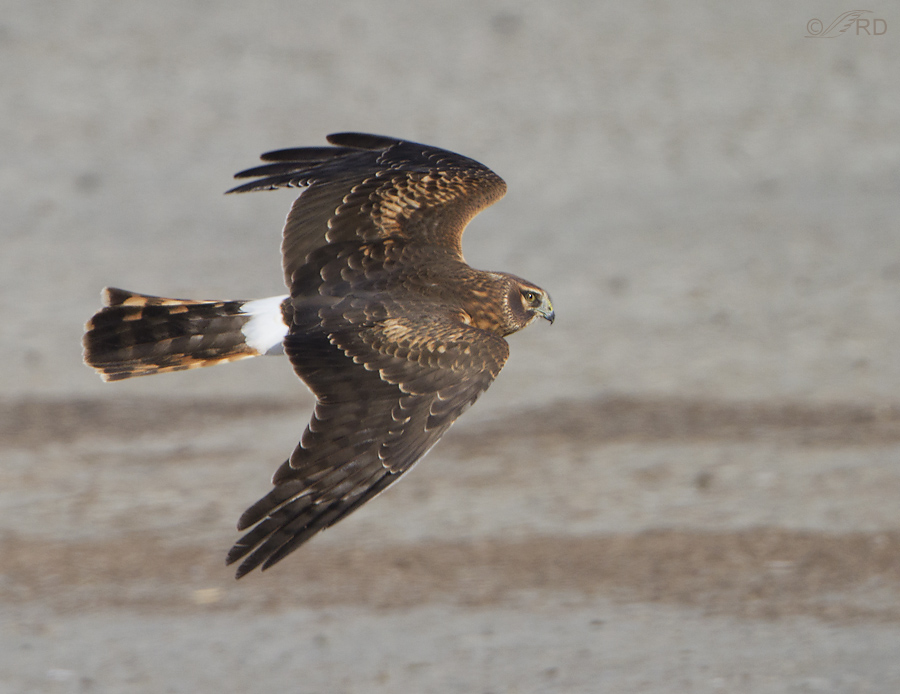
Northern Harriers are strongly sexually dimorphic, meaning adult males and females look very different from each other. The difference is so great in Northern Harriers the untrained observer often assumes the males and females are different species. This is an adult female, as you can see the difference is dramatic. Males are also about 50% smaller than females.
To make it even more confusing juveniles of both sexes resemble adult females, although there are a few relatively minor differences.
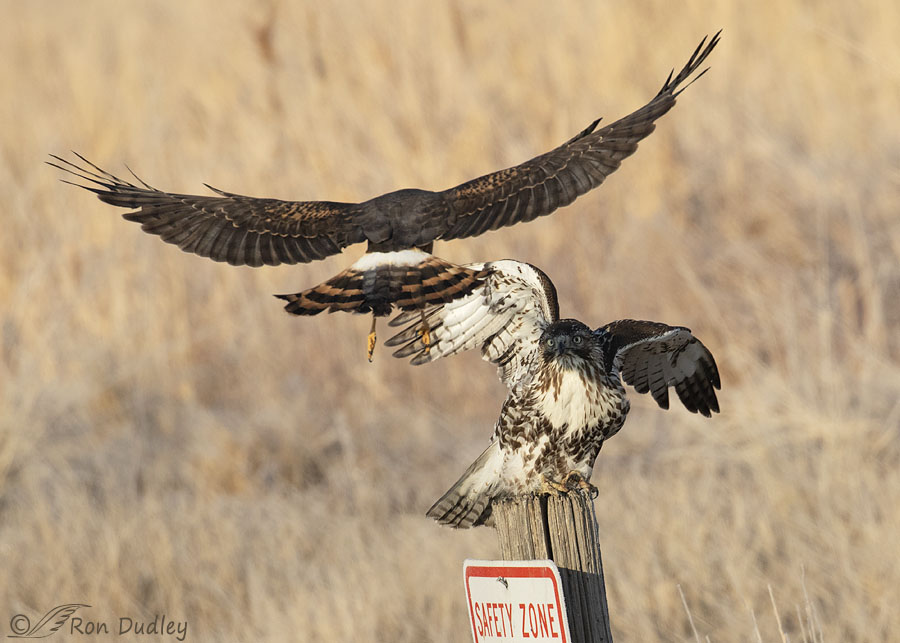
I posted this photo of a harrier attacking a perched Red-tailed Hawk two days ago. Notice the harrier’s gray central tail feather. This is an immature male just beginning to transition into adult male plumage. The central feather is part of his developing adult male plumage while the rest of them are still juvenile feathers.
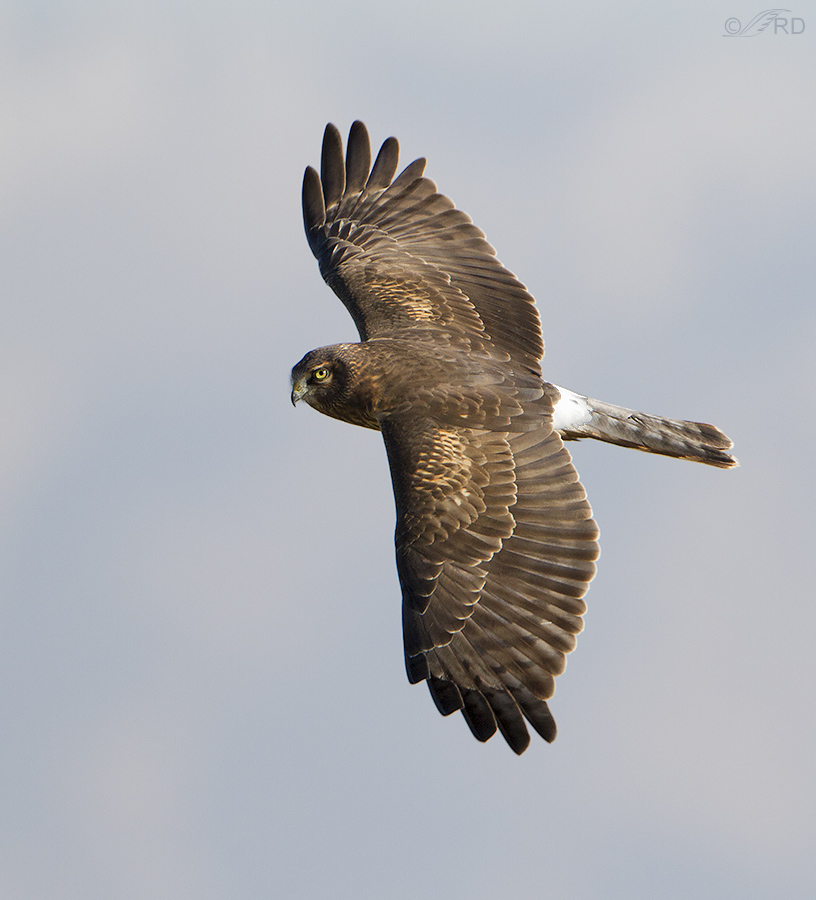
More of this immature male’s tail feathers are gray so he’s further along in his transition to adult male plumage than the previous bird is. It won’t be long until this bird looks like the adult male in my first three photos above.
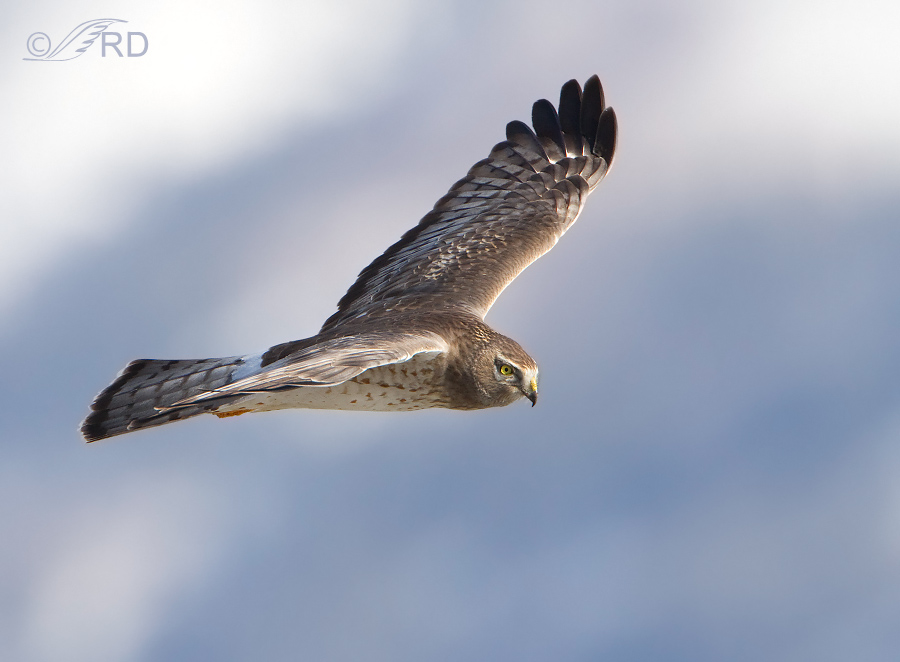
Here’s a nearly adult male. His transition to adult male plumage is nearing completion. I added this photo after I’d published today’s post.
So to the untrained eye immature harriers of both sexes and adult females all look pretty much alike (although there are some relatively minor differences) and only adult males are gray and white.
That’s a big part of the reason adult males are often referred to as ‘Gray Ghosts’ – they’re gray instead of brown and they’re a fairly small part of the overall population of Northern Harriers so it’s relatively uncommon to see them.
Ron


Beautiful shots, Ron. I can’t decide which of the three of the male is my favorite – but I really like the highlight of the very interesting body shape in the first photo. These are such awesome birds – just viewing photos gives me a bit of a thrill, so I really envy your ability to seek these guys out in the wild. Thanks for sharing.
Wonderful shots. Very nice documentation of the sexual di-morphism and plumage transformation.
Oh, I adore ALL of these photos, but especially #3 and that last of the near-full-adult (the backgrounds are so elegant). And I’m new enough to birding/hawking that I’ve only ever known them as NOHAs, and always knew the beautiful male is the hauntingly named Gray Ghost, all thanks to your blog! 😊
Thank you, Chris. “Gray Ghost” is more of a nickname than anything and of course it only applies to adult males.
Should have said “hauntingly nicknamed” but it seemed so … inelegant! 😉
I keep forgetting that Northern Harriers are Marsh Hawks. I used to use a wonderful worksheet on food webs/trophic levels in which a Marsh Hawk was one of the predators.
These are all absolutely fantastic photographs of gorgeous birds!!! I feel for the Red Tail; apparently that post was NOT a safety zone (false advertising).
False advertising indeed! The irony is part of the reason I like that photo so much. Thanks, Marty.
Beautiful captures and explanation. I had not heard them called gray ghosts till I started reading your blog. It fits. They are gray and have silent flight as they appear out of the reads and marsh grass. I grew up calling them marsh hawks or marsh harriers. They used to be very abundant in the fields of Centerville when I was young, along with killdeer and meadowlarks.
April, as you know that entire Farmington/Centerville area is being overrun with development and many species have suffered as a result. It seems like every other time I visit Farmington there’s some new development of some kind starting up. Makes me angry.
Yes, I have watched the area grow, taking out many of the fields, ponds and open areas I adored. It depresses me and sometimes physically nauseates me.
Great series! Now, I’ll be on the lookout for brown Harriers with a few grey feathers. I guess it all has to do with the time of first molt and how long it takes to complete. Thanks
This is a ghost I would be more than happy to be haunted by – though I would love to see his mates and offspring as well.
EC, most of us are delighted every time we see an adult male. Some folks, including some of my readers, never see adult males.
Just so long as the females see them I suppose that people seeing them is a bonus. A no doubt much appreciated bonus.
Ron, What is the length of time it takes a male to transition from immature brown to full adult grey plumage ? Outstanding images and an education as always !!
Thanks, Gary. I’m afraid I don’t know the answer to your question. When I get a chance I’ll have to do a little research…
Mind blowingly marvelous photos
Thanks very much, Nicole.
Beautiful photos and great explanation.I knew nothing about it.
Thank you very much.
Thank you, Jorge. I’m glad you found the info useful.
Your sharpness on most of these shots is just incredible, Ron.
Thanks, Nancy. Remember, you only see the better ones… 🙂
Very informative session today along with the superb visuals.
Thanks, Lyle.
I’m really liking the first three shots with the complimentary background colors.
The birds really pop. PS: I still call them marsh hawks (to myself) as it seems so appropriate …
Jamila, it took me a long time to break that “Marsh Hawk” habit. When I’d use that term younger birders would look at me like I was nuts.
Nice shots (amazing how “aware” of you they are). I didn’t realize they were dimorphic! Just figured the darker ones were juveniles! Always enjoy “continuing education”..😀
26/fog/mist = black ice – change of plans on going to town today! 😳
Judy, birds are amazingly aware. It always makes me smile to see photos of hordes of bird photographers lined up near the water behind Conowingo Dam in Maryland so they can photograph Bald Eagles and half of them are dressed in camo.
As if they’re fooling the eagles… 🙂
Thanks for explaining the coloration/nickname issue. All of this time, I’d been
under the impression that odd individuals were grayer than others !
Kris, you’re far from alone. There’s an immense amount of confusion out there about Northern Harriers. And it doesn’t help that for many years their common name was Marsh Hawks instead of Northern Harriers. When I first started seeing them and learning about them EVERYONE called them Marsh Hawks.
The first Northern Harrier I ever saw was on a backpacking trip many years ago in the Adirondacks, and she was hunting over a marsh. I was really struck by the interesting hunting behavior. A guide to Northeastern birds that I had at the time (no web back then) referred to the bird as a Marsh Hawk, which made perfect sense to me. It took me quite a few years to stop thinking “Marsh Hawk” whenever I saw a Northern Harrier.
Sensational series, thanks for sharing.
Charlotte Norton
Thanks, Charlotte.
Outstanding photos as always. Like the look in the first photo, “There’s that guy in the truck again – I should fly away and tick him off, but it is the holiday season so I will keep flying this way and make his day.”
Envious of your abilities and also that you have male Harriers. I still have never seen one here in spite of having at least two females close by.
Everett, with two females hanging around I wouldn’t be surprised if you’ll see a male or two early next spring.
Nice to wake up to great shots of my favourite bird. Beautiful!!
Thanks very much, John.